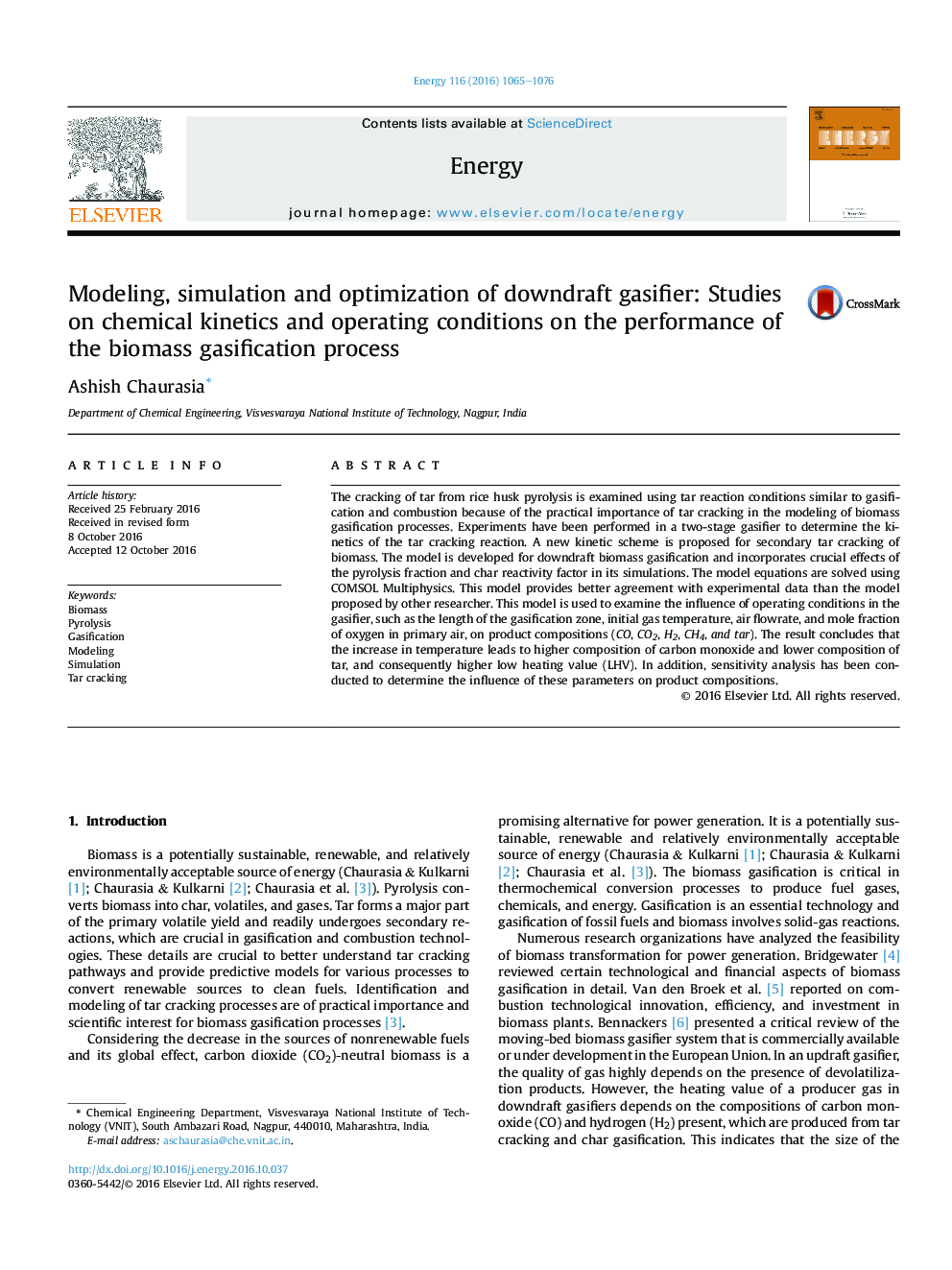| Article ID | Journal | Published Year | Pages | File Type |
|---|---|---|---|---|
| 5477355 | Energy | 2016 | 12 Pages |
Abstract
The cracking of tar from rice husk pyrolysis is examined using tar reaction conditions similar to gasification and combustion because of the practical importance of tar cracking in the modeling of biomass gasification processes. Experiments have been performed in a two-stage gasifier to determine the kinetics of the tar cracking reaction. A new kinetic scheme is proposed for secondary tar cracking of biomass. The model is developed for downdraft biomass gasification and incorporates crucial effects of the pyrolysis fraction and char reactivity factor in its simulations. The model equations are solved using COMSOL Multiphysics. This model provides better agreement with experimental data than the model proposed by other researcher. This model is used to examine the influence of operating conditions in the gasifier, such as the length of the gasification zone, initial gas temperature, air flowrate, and mole fraction of oxygen in primary air, on product compositions (CO, CO2, H2, CH4, and tar). The result concludes that the increase in temperature leads to higher composition of carbon monoxide and lower composition of tar, and consequently higher low heating value (LHV). In addition, sensitivity analysis has been conducted to determine the influence of these parameters on product compositions.
Related Topics
Physical Sciences and Engineering
Energy
Energy (General)
Authors
Ashish Chaurasia,
